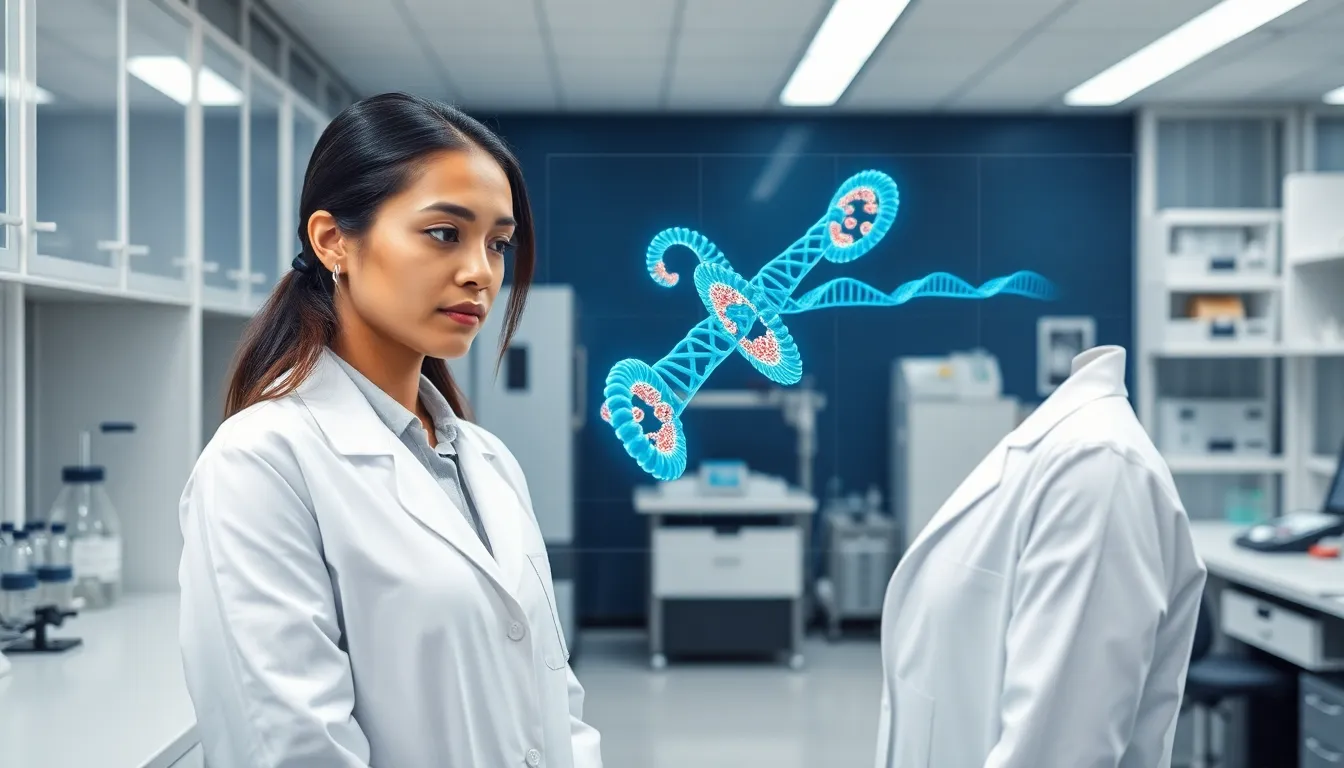Imagine if your DNA had a secret life, flipping through pages of a book that held the keys to life itself. Welcome to the world of chromatin remodelling, where the structure of our genetic material can be altered like a magician rearranging cards. In this text, we’ll investigate into chromatin remodelling, what it is, why it matters, and how it impacts everything from gene regulation to disease. So buckle up, because we’re about to make the intricacies of DNA structure as interesting as your favorite Netflix series.
Table of Contents
ToggleWhat Is Chromatin Remodelling?

Chromatin remodelling is a vital process that essentially dictates how genes are accessed and expressed within our DNA. Chromatin, the substance that makes up chromosomes, consists of DNA wrapped around proteins called histones. This twisted structure often resembles a spool of thread, where the ability to unwind or tighten plays a significant role in gene regulation.
In essence, chromatin remodelling involves moving, ejecting, or restructuring these histones to either expose or obscure DNA sequences. This action can be likened to an expertly crafted dance routine, where each step dictates the next. The end result? An incredible range of possibilities for gene expression, affecting everything from our physical traits to susceptibility to diseases.
The Importance of Chromatin Structure
The structure of chromatin is paramount in ensuring that our genetic code remains intact while still being dynamic enough to respond to cellular signals. Think of chromatin as a library where some books are on display while others are tucked away on high shelves. If every book were on display all the time, the library would be chaotic and unreadable. Likewise, in biological systems, not all genes need to be active at once.
This structural variability is crucial because it affects gene availability for transcription, the first step in gene expression. The more accessible the chromatin, the easier it is for the cell machinery to do its job. Hence, improper remodelling can lead to significant issues in gene regulation, eventually affecting cellular function and health.
Mechanisms of Chromatin Remodelling
Chromatin remodelling occurs through various mechanisms, employing several specialized protein complexes that modify chromatin structure.
Types of Chromatin Remodelling Complexes
Two primary categories of chromatin remodelling complexes exist:
- SWI/SNF Complexes: Well-known for using ATP hydrolysis to reposition nucleosomes.
- ISWI Complexes: Known for spacing nucleosomes and ensuring proper DNA accessibility.
Histone Modifications and Their Role
Histone proteins can also undergo modifications that influence chromatin remodelling. These changes often involve the addition or removal of chemical groups like methyl or acetyl groups. For instance, acetylation generally leads to an open chromatin structure, promoting gene expression, whereas methylation can have either an activating or repressing effect depending on its specific context.
ATP-Dependent Chromatin Remodellers
These ATP-dependent remodellers are energetic little engines that alter the position of nucleosomes using energy derived from ATP. By making the necessary changes, they allow the transcription machinery easy access to the DNA. This method emphasizes the dynamic nature of chromatin, akin to rearranging furniture for an impromptu dance party.
Implications in Gene Regulation
Chromatin remodelling plays an instrumental role in gene regulation, serving as a gatekeeper that either allows or blocks gene expression. For example, when genes need to be turned on for cellular activities, chromatin needs to be remodelled to expose these genes.
Conversely, when certain genes need to be silenced, the chromatin tightens, effectively packing the genes away. This selective opening and closing of the genetic library ensures that only the necessary chapters are accessible at any given time, allowing cells to maintain balance and function.
Chromatin Remodelling in Development and Differentiation
Throughout an organism’s development, chromatin remodelling coordinates gene expression changes required for cellular differentiation. During early development, stem cells are characterized by open chromatin, allowing for a wide range of gene expression options.
As development progresses, specific genes need to be activated or silenced, and chromatin remodelling ensures that this happens smoothly. For instance, when stem cells differentiate into brain or skin cells, chromatin remodelling allows different gene sets to be turned on or off, guiding the cells on their unique pathways. This intricate balletic performance is vital for ensuring that every cell knows its role, making chromatin remodelling a superstar in developmental biology.
Chromatin Remodelling and Disease
The implications of dysfunctional chromatin remodelling cannot be overstated, as it has been linked with various diseases, most notably cancer. When chromatin structure is improperly regulated, genes that should be silenced may become active, leading to uncontrolled cell growth. Conversely, essential tumor suppressor genes might remain tightly wrapped in chromatin, preventing their expression.
Besides, other conditions like autoimmune diseases and genetic disorders are also influenced by chromatin remodelling irregularities. Understanding the mechanisms that underpin these activities is crucial for developing targeted therapies that can restore proper gene function and, by extension, health.
Future Directions in Chromatin Research
The field of chromatin research is rapidly evolving, with new technologies such as CRISPR and single-cell sequencing opening exciting avenues for study. Future research may investigate deeper into the interplay between chromatin remodelling and epigenetic changes, refining our understanding of gene regulation.
Also, investigations into the role of chromatin remodelling in aging and regenerative medicine could set the stage for unique therapies that harness the body’s intrinsic capabilities. The potential is vast, and as scientists continue to unravel the complexities, the promise of improved health outcomes draws nearer.


